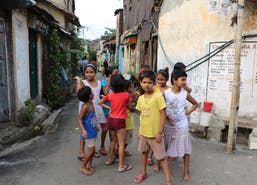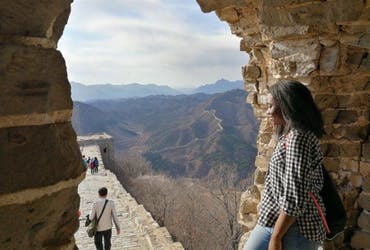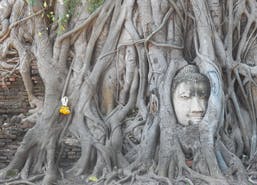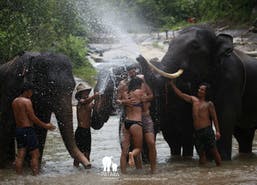Borobudur Temple
While spending a month in Bali in the summer of 2015, I took a four day trip to the island of Java to visit Borobudur, a 9th century Mahayana Buddhist temple considered Indonesia’s single most visited tourist attraction. It is a fairly short and inexpensive flight on regional airlines like Air Asia and Garuda from Bali’s Denpasar airport to Yogyakarta (pronounced Joe-jah-cart-a and phonetically nicknamed “Joe-Ja”). I was traveling at a time where an active volcano on Java was creating chaos for flights all over Indonesia and the South Pacific but the day I flew was clear (although an Air Asia flight crashed that same day elsewhere in Asia with no survivors so that was kind of sobering).

Coming from the peaceful and easygoing Hindu Bali to the overcrowded city of Yogyakarta on the Muslim island of Java was a real change. Arriving at the airport in typical hot season attire of shorts and a t-shirt that is standard for tourists on Bali, I got the message pretty quickly from the disapproving looks that I needed to change into long sleeves and pants in order not to offend. At the airport, I negotiated for a driver for the day to take me first to Prambanan, a 9th century Hindu temple and UNESCO World Heritage site, and then on to my hotel in the center of the city in one of the largely expat areas on Jalan Prawirotaman.

While in Bali, I had met some expats who recommended that I stay at the Manohara hotel – a Buddhist retreat – which is the only hotel on the temple grounds. Borobudur is considered one of the greatest Buddhist monuments in the world and one of the highlights of visiting it is getting up before dawn to climb it and watch the sunrise. Guests of Manohara get special early access before the massive crowds are let in shortly after sunrise. I spent most of the afternoon touring the grounds and then headed to the top to watch the sunset. The view is spectacular. One can see for miles in every direction and despite the throngs of tourists, there is a strong sense of being in a very holy site. The temple complex was constructed in the 9th century and abandoned after the 14th century decline of Hindu kingdoms in Java. It was taken over by the jungle for several centuries until it got global attention for its “rediscovery” in the early 1800s.

It was a lucky thing that I had gone up to see the sunset because the next morning, I got up around 4am to head up to the top with roughly 100 other sunrise seekers but the combination of dense fog and ash from the active volcano prevented us from having the complete Borobudur experience. Getting to a once-in-a-lifetime place and having uncooperative weather is always discouraging – it happened to me this past April at Machu Picchu – but the experience was still incredible and so worth the effort.

A bit of advice:
Yogyakarta may have its fans but I can’t include myself among them. I have traveled throughout Asia and South America and have seen many big cities with their share of poverty but the conditions in this city were shocking. The heat in July was oppressive and the tuk-tuk drivers are relentless in trying to convince you to hire them. If I could have done the trip over, I would have avoided spending a night there by flying in early, spending an hour in Prambanan two to three hours seeing the Yogyakarta sites, and then heading straight out to spend the night in Manohara, seeing the temple the next morning and then heading back to the airport to fly out on the afternoon of the second day. Alternatively, there are other places to head off to on Java and many other islands to explore in Indonesia.




